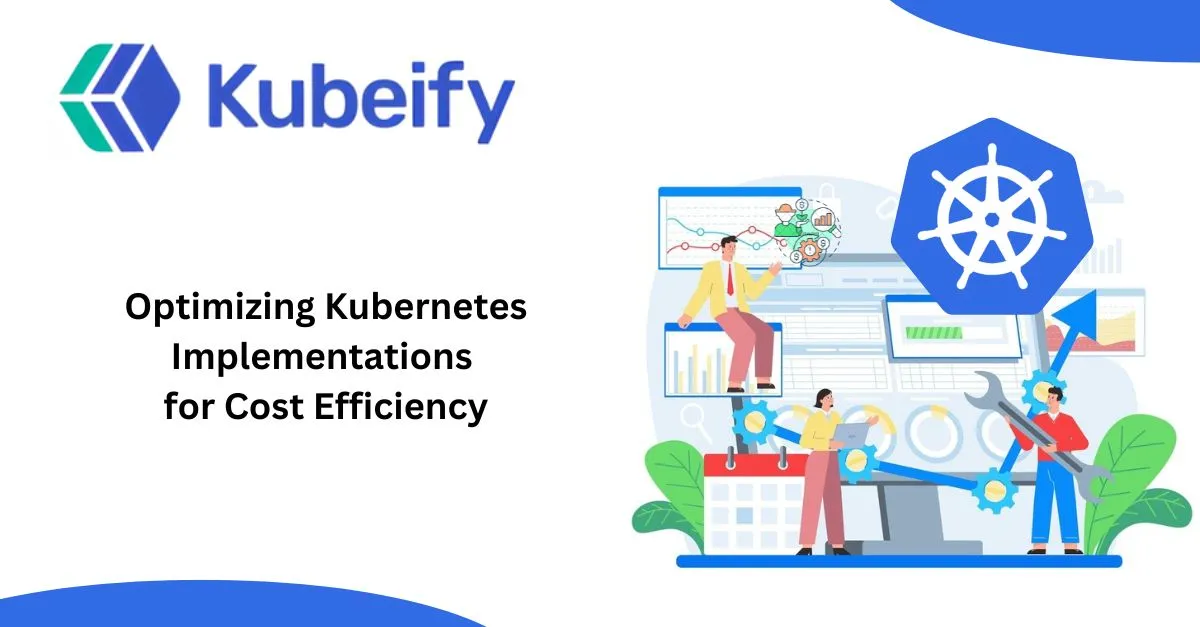AI Cloud
- Cloud Native Product Development
- Cloud Native FaaS
- Monolith to Microservices
- DevSecOps as a Service
- Kubernetes Zero Downtime

Kubernetes has become the de facto standard for container orchestration, offering scalability, flexibility, and resilience. However, without proper optimization, Kubernetes workloads can quickly lead to excessive cloud costs. Organizations must implement strategic cost optimization practices to maintain efficiency while keeping expenses under control.
Provisioning resources effectively is critical for cost efficiency. Overprovisioned CPU and memory allocations lead to wasted resources, while underprovisioning can cause performance issues. Use the following approaches:
Resource Requests and Limits: Set appropriate requests and limits for CPU and memory in Kubernetes manifests.
Vertical Pod Autoscaler (VPA): Dynamically adjusts resource requests based on actual usage.
Node Sizing: Choose the right instance types based on workload demands.
The Kubernetes Cluster Autoscaler automatically scales node pools up or down based on workload needs, preventing overprovisioning and reducing idle costs. Best practices include:
Use Spot Instances for Non-Critical Workloads: Cloud providers offer significant discounts on spot/preemptible instances.
Leverage Mixed Instance Types: Optimize price-performance balance by using a mix of instance types.
Storage costs in Kubernetes can escalate if not managed properly. Consider the following strategies:
Use Persistent Volume Claims (PVCs) Judiciously: Allocate only necessary storage.
Choose Cost-Effective Storage Classes: Use storage classes that balance performance and cost (e.g., standard vs. SSD).
Enable Data Retention Policies: Avoid unnecessary data persistence and automate cleanup of unused volumes.
Kubernetes provides multiple scaling mechanisms that help optimize costs:
Horizontal Pod Autoscaler (HPA): Adjusts the number of pods based on CPU or memory usage, ensuring efficient resource utilization.
Event-Driven Scaling: Tools like KEDA (Kubernetes Event-Driven Autoscaler) enable scaling based on external metrics such as queue length or HTTP requests.
Networking in Kubernetes, if not optimized, can lead to high data transfer expenses. Key optimizations include:
Reduce Cross-Zone Traffic: Deploy workloads strategically to minimize inter-zone data transfer costs.
Leverage Internal Load Balancers: Use internal LBs instead of public-facing ones when possible.
Optimize Service Mesh Overheads: Use lightweight service mesh options or disable unnecessary features to reduce resource consumption.
Gaining visibility into resource utilization and cloud expenses is essential for ongoing cost optimization:
Use Cost Monitoring Tools: Utilize tools like Kubecost, OpenCost, or cloud-native cost management solutions.
Set Budgets and Alerts: Establish cost thresholds to get notified when expenses exceed limits.
Regular Cost Audits: Continuously analyze resource consumption patterns and optimize accordingly.
For organizations running multiple teams or environments in a single Kubernetes cluster, implementing multi-tenancy strategies can optimize costs:
Namespace-Based Quotas: Set CPU, memory, and storage quotas for different teams.
Chargeback and Showback Models: Assign costs to teams based on their resource consumption.
Optimizing Kubernetes for cost efficiency requires a proactive approach, combining automation, scaling strategies, and continuous monitoring. By implementing right-sizing, autoscaling, storage optimization, efficient networking, and cost visibility tools, organizations can significantly reduce cloud expenses while maintaining performance. Regular audits and a culture of cost-consciousness within development teams will ensure long-term savings in Kubernetes operations.

Kubeify's team decrease the time it takes to adopt open source technology while enabling consistent application environments across deployments... letting our developers focus on application code while improving speed and quality of our releases.
– Yaron Oren, Founder Maverick.ai (acquired by OutboundWorks)
Let us know what you are working on?
We would help you to build a
fault tolerant, secure and scalable system over kubernetes.
